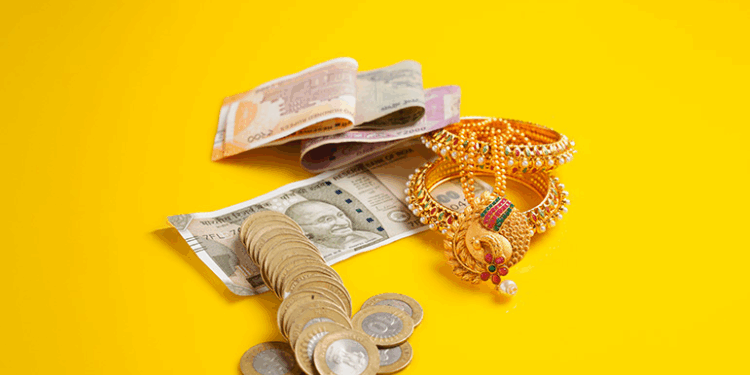Gold has always held a deep cultural and financial significance in many countries, particularly India, where it is seen as both a valuable asset and a symbol of prosperity. Gold loans are gaining popularity as a quick financial solution for those who need funds but don’t want to lose ownership of their prized asset. One of the crucial factors to understand before taking a gold loan is the gold loan per gram rate. This rate forms the cornerstone of how much a borrower can avail as a loan against their gold. However, gold loan per gram rates vary significantly across banks and financial institutions. Let’s explore these variations and the factors influencing them.
Understanding Gold Loan Per Gram Rate
Gold loan per gram rate is essentially the amount a bank offers for every gram of gold you pledge as collateral. The calculation of this rate depends on various factors such as gold purity, current market prices, and the loan-to-value (LTV) ratio set by regulatory bodies. Most lenders follow the guidelines by the Reserve Bank of India (RBI), which allows financial institutions to lend up to 75% of the value of gold.
To give an approximate idea, if the market price of gold is ₹5,000 per gram and your gold qualifies as 22-karat purity, the bank may offer you ₹3,750 per gram based on the LTV policy. However, this figure can vary greatly from one institution to another, which makes it crucial to compare rates before settling for a lender.
Why Does the Gold Loan Per Gram Rate Differ Among Banks?
Purity of Gold and Valuation Process
Gold loan per gram rates are calculated based on the purity and weight of the pledged gold. Different banks may have slightly different valuation methods, and the equipment used to determine purity can also impact the rate offered. For example, some banks may exclusively accept gold that meets specific karat benchmarks (typically 18 to 24 karats).
Market Gold Rates
Gold prices fluctuate daily due to numerous global and domestic factors, such as currency changes, central bank policies, and demand in the international market. Banks update their gold loan per gram rates frequently based on changes in the gold rate. Borrowers can use a gold rate calculator to check the prevailing rates and make better decisions.
Loan Schemes and Offers
Some banks provide promotional offers or customized loan schemes to attract borrowers. These schemes might include better per gram rates or additional benefits, such as lower interest rates or processing fee waivers. However, borrowers need to be cautious and understand the terms of the offer.
Loan-to-Value (LTV) Ratio
While the RBI caps the LTV ratio at 75%, certain banks may choose to offer less based on their risk analysis. This directly affects the gold loan per gram rate since a lower LTV ratio reduces the borrowing limit.
Regional Factors
Gold loan per gram rates may also vary based on location. For instance, banks in metropolitan cities may offer slightly higher rates due to increased competition and demand, whereas in rural areas, the rates may be lower due to differing gold valuation techniques and less competitive dynamics.
Bank Type
Public sector banks, private banks, cooperative banks, and non-banking financial companies (NBFCs) all have different operating models. NBFCs, for instance, are known for their faster processing and higher per gram rates, albeit often with higher interest rates as compared to banks. On the other hand, public sector banks might offer competitive interest rates but lower per gram valuations.
Using a Gold Rate Calculator for Better Comparisons
To ensure maximum returns on their pledged gold, borrowers can utilize a gold rate calculator. This tool helps determine the approximate value of a loan based on the gold rate per gram, weight, and purity. Many banks and NBFCs provide online gold rate calculators that borrowers can use to assess their eligibility before applying.
For example, if you pledge gold weighing 50 grams of 22-karat purity, the calculator will factor in the current gold market price and the institution’s LTV ratio to compute your loan amount. Using this tool simplifies comparisons and saves borrowers from making uninformed decisions.
How to Choose the Best Gold Loan Provider?
Compare Rates Across Banks
Don’t settle on the first lender. Compare gold loan per gram rates across various banks and NBFCs.
Account for Interest Rates
A higher loan amount per gram might come with higher interest costs. Ensure you factor in how much you’ll repay over time.
Check Processing Fees and Other Charges
Some lenders impose additional charges, which can make a seemingly high per gram rate less appealing in the long run.
Evaluate Repayment Flexibility
Opt for lenders offering repayment options that suit your financial capability.
Conclusion
The gold loan per gram rate varies not only across different banks but also based on the purity of gold, prevailing market conditions, and LTV ratios. By leveraging a gold rate calculator and thoroughly comparing lenders, borrowers can secure the best possible deal. Gold loans are an excellent financial tool, especially when you need quick liquidity without selling your assets. However, understanding key factors influencing gold loan rates can help you maximize the value of your collateral and avoid unnecessary costs. Always do your research thoroughly to choose a lender that aligns with your needs and financial goals.







